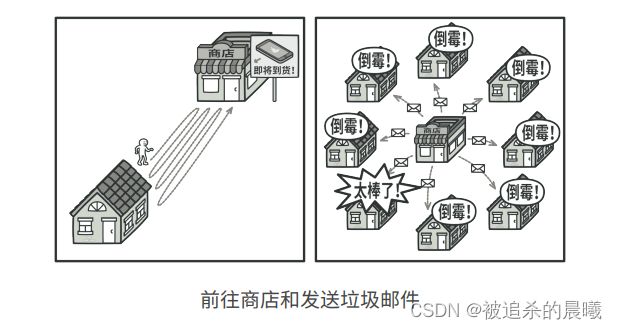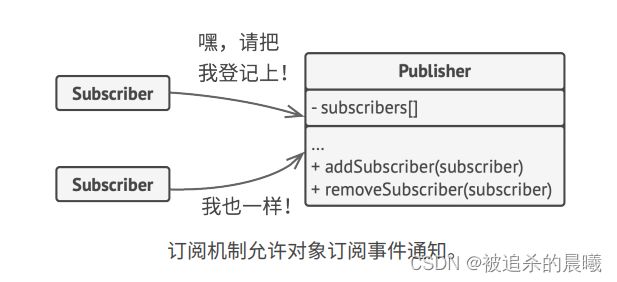- 【mysql基础语法】
baboozx
mysql
sql基础语法一基本语法查询:select字段from表名where条件插入:insertinto表名(column_name)values(values)删除:deletefrom表名where条件更新:update表名set(column_name=value),where条件应用于某列的聚合函数。聚合函数对数据进行数学运算,如计算平均值(AVG)、总和(SUM)、最大值(MAX)、最小值(M
- python 基本知识
达达玲玲
python开发语言
Python:背景知识及环境安装什么是Python?Python是一种解释型、面向对象的高级编程语言。它的设计哲学强调代码的可读性和简洁性,因此被广泛应用于各种领域,包括:数据科学与机器学习:NumPy,Pandas,Matplotlib,Scikit-learn等库让Python成为了数据分析和机器学习的首选语言。Web开发:Django,Flask等框架提供了高效的Web开发解决方案。自动化:
- 搭建Hadoop与Hive环境
达达玲玲
hadoophive大数据
当搭建Hadoop与Hive环境时,以下是每个步骤的详细操作说明:1.安装并配置CentOS7操作系统:-下载CentOS7ISO镜像文件,并通过虚拟机或物理机安装CentOS7操作系统。-在安装过程中,为系统分配必要的网络、用户和权限。2.安装Java开发环境:-下载适合您的系统的JavaJDK版本。-使用命令或GUI工具安装JavaJDK。-配置JAVA_HOME环境变量:-打开终端,输入以下
- hive视图与物化视图使用详解
达达玲玲
hivehadoop数据仓库大数据
Hive视图和物化视图都是在数据仓库中处理数据的概念。下面对Hive视图和物化视图进行详细解释:Hive视图:1.Hive视图是一个逻辑表,它是对基础表的查询结果的引用,被视为一个新表。2.视图可以简化复杂查询,隐藏复杂的逻辑,并将查询重用。3.视图不存储数据,而是在查询时动态地返回结果。4.视图可以基于单个表或多个表创建,也可以对其他视图创建。Hive视图的使用方式:1.创建视图:```sqlC
- 学习使用pymodbus模块实现Modbus通讯
草莓仙生
学习单片机嵌入式硬件
Modbus是一种工业领域广泛使用的通信协议,而PyModbus是一个在Python中实现Modbus通信的库。它支持多种Modbus模式,包括RTU(通过串行线路),ASCII和TCP/IP。1.建立通讯frompymodbus.clientimportModbusTcpClientclient=ModbusTcpClient('localhost',port=502)client.connec
- 力扣动态规划-12【算法学习day.106】
南宫生
算法#动态规划算法leetcode动态规划java数据结构
前言###我做这类文章一个重要的目的还是给正在学习的大家提供方向(例如想要掌握基础用法,该刷哪些题?建议灵神的题单和代码随想录)和记录自己的学习过程,我的解析也不会做的非常详细,只会提供思路和一些关键点,力扣上的大佬们的题解质量是非常非常高滴!!!习题1.乘积最大子数组题目链接:152.乘积最大子数组-力扣(LeetCode)题面:代码:classSolution{publicintmaxProd
- 力扣动态规划-10【算法学习day.104】
南宫生
算法#动态规划算法leetcode动态规划java学习
前言###我做这类文章一个重要的目的还是给正在学习的大家提供方向(例如想要掌握基础用法,该刷哪些题?建议灵神的题单和代码随想录)和记录自己的学习过程,我的解析也不会做的非常详细,只会提供思路和一些关键点,力扣上的大佬们的题解质量是非常非常高滴!!!习题1.环形子数组的最大和题目链接:918.环形子数组的最大和-力扣(LeetCode)题面:附上灵神代码:classSolution{publicin
- 一文大白话讲清楚webpack基本使用——18——HappyPack
16年上任的CTO
webpackwebpack前端node.jshappypack
文章目录一文大白话讲清楚webpack基本使用——18——HappyPack1.建议按文章顺序从头看,一看到底,豁然开朗2.啥是HappyPack3.怎么使用HappyPack一文大白话讲清楚webpack基本使用——18——HappyPack1.建议按文章顺序从头看,一看到底,豁然开朗第一篇:一文大白话讲清楚啥是个webpack第二篇:一文大白话讲清楚webpack基本使用——1——完成webp
- 字节iOS面试经验分享:HTTP与网络编程
LucianaiB
网络ios面试
字节iOS面试经验分享:HTTP与网络编程嗨,我是LucianaiB!总有人间一两风,填我十万八千梦。路漫漫其修远兮,吾将上下而求索。目录字节iOS面试经验分享:HTTP与网络编程HTTP协议简介iOS中HTTP请求的实现原理HTTPS与HTTP的区别TCP与UDP的区别三次握手四次挥手Cookie与Session流量控制与拥塞控制虚拟内存多线程并发访问共享资源iOS中线程数量的限制堆和栈的区别a
- Python编写Modbus详细指南与示例
达达玲玲
python开发语言
Python编写Modbus:详细指南与示例理解ModbusModbus是一种串行通信协议,广泛用于工业自动化领域。它定义了一系列消息结构,用于在多个设备之间交换数据。Python由于其易用性和丰富的库,成为了编写Modbus应用程序的热门选择。安装PyModbus库PyModbus是Python中一个功能强大的Modbus协议栈实现,支持RTU和TCP两种模式。Bashpipinstallpym
- number类型的toFixed方法重写,toFixed四舍五入在数值很小时的精度问题
xixi_666
jstoFixed
问题环境:1、在对数值0.005进行四舍五入保留2为数字时,在ie8会发现0.005.toFixed(2)=0.002、在toFixed使用小数点后为0的数字都被忽略,没有保留0作为小数位Number.prototype.toFixed=function(s){varchangenum=(parseInt(this*Math.pow(10,s)+0.5)/Math.pow(10,s)).toStr
- 学习yosys(一款开源综合器)
qq85058522
自己动手写CPUfpga开发
安装sudoapt-getinstallyosys#ubuntu22.04仓库里面是yosys-0.9sudoinstallxdot创建脚本show_rtl.ysread_verilogcpu.vhierarchy-topcpuproc;opt;fsm;opt;memory;opt;show-prefixcpu调用脚本yosysshow_rtl.ysverilog代码modulecpu(input
- javascript中toFixed()四舍五入计算bug,及解决方法,四舍六入,五看奇偶并不精准,重新toFixed方法才是万全之策呀
叫我小月儿
字符串jsbugjavascript
问题描述:最近做一个项目涉及金额计算保留两位小数,以前一直以为toFixed方法就是四舍五入的,上线后用户用户反馈计算出来的金额少了一分钱,跟其票面金额不一致,深入研究后发现使用toFixed保留两位小数是大坑呀。请看下面的例子:3.135.toFixed(2)**本以为是3.14,然而却是3.13!!!**网上有人整理出toFixed方法“四舍六入,五看奇偶”的原则:当舍去位的数值=6时,在舍去
- NVIDIA Isaac Lab 入门教程(一)
kuan_li_lyg
机器人最优控制工具人工智能机器人开发语言python强化学习模仿学习Isaac
系列文章目录前言IsaacLab是一个用于机器人学习的统一模块化框架,旨在简化机器人研究中的常见工作流程(如RL、从演示中学习和运动规划)。它建立在英伟达IsaacSim的基础上,利用最新的仿真功能实现逼真的场景和快速高效的仿真。该框架的核心目标是模块化:轻松定制和添加新环境、机器人和传感器。灵活性:适应社区不断变化的需求。开放性:保持开源,允许社区贡献和扩展框架。包含电池:包含大量可随时使用的环
- Struts2 架构
段远山
Struts2javaspringmvcstruts2python
Struts2是一个MVC拉动的(或MVC2)框架,Struts2的模型-视图-控制器模式是通过以下五个核心部分进行实现的:操作(Actions)拦截器(Interceptors)值栈(ValueStack)/OGNL结果(Result)/结果类型视图技术而Struts2与传统的MVC框架略有不同,因为它由Action扮演模型的角色,而不是控制器,虽然这样会有一些重叠。上图描述了Struts2高级
- isaac lab 教程(二)
weixin_44572777
机器人
关于看过的内容的备份,在初期学习开发过程中是不必要的原文链接开发人员指南—IsaacLabdocumentation(robotsfan.com)开发人员指南对于开发,我们建议使用MicrosoftVisualStudioCode(VSCode)。NVIDIAOmniverse也建议使用此方法,并且存在有关如何使用VSCode进行调试Omniverse扩展的教程。设置VisualStudioCod
- ssh创建密钥ansible批量分发
liujiangxu
linuxsshlinux
ssh-keygen命令用于为“ssh”生成、管理和转换认证密钥,它支持RSA和DSA两种认证密钥SSH密钥默认保留在~/.ssh目录中id_rsa:私钥文件id_rsa.pub:公钥文件known_hosts:ssh访问不同的主机会将公钥记录到此文件,每次访问会核对密钥创建ssh密钥[root@ceshi-128~]#ssh-keygen-trsaGeneratingpublic/private
- 深入Kotlin语言在Android开发中的应用_Android_lecture07
新职语
本文还有配套的精品资源,点击获取简介:在Android开发领域,Kotlin凭借其简洁性、安全性和强大的交互能力已经成为首选编程语言。本讲座将深入讲解Kotlin的基础语法、空安全、类型系统、高阶函数与Lambda表达式、扩展函数与属性、Anko库、协程、Android核心组件以及数据绑定。同时,还将介绍Dagger2或Hilt依赖注入、MVVM架构和AndroidJetpack组件等高级技巧,并
- ubuntu上编译fortran_Ubuntu下安装Intel Fortran编译器(ifort)
新职语
IntelFortanCompiler简称ifort,Windows下的ifort是收费的,但是Linux系统下提供免费的ifort,可以在下面的链接中下载需要的版本(必须先注册,随后会收到官网发来的邮件,里面提供了接下来安装需要的series-number)http://software.intel.com/en-us/articles/non-commercial-software-downl
- Pytest Fixtures 介绍与用法
香奈儿5号奶茶
pytest
PytestFixtures是Pytest框架中用于管理测试前置条件和后置清理的一种强大工具。可以帮助我们在测试中设置初始状态,减少重复代码,并提高测试的可维护性登录后复制下载代码查看我的示例gitclonehttps://gitee.com/Ac1998/pytest-fixtures-demo.git1.2.下面我们来学习一下如何使用它前置条件已经安装了最新版本已安装Python基本了解如何使
- php tofixed,js修复toFixed()四舍五入精度问题,并相对于原生提高了性能
weixin_39590868
phptofixed
思路是将小数分割成整数和小数部分然后进行四舍五入再补全字符串后的0目前没发现有什么问题。有bug请反馈谢谢代码原创,转载请注明连接谢谢"usestrict";/***https://my.oschina.net/isgaoyi/blog/4717508-v1.0(2020-11-15T01:46:32+0800)*
[email protected]**修复四舍五入精度问题*@me
- python模块之psutil详解_基于python调用psutil模块过程解析
谢艺馨
这篇文章主要介绍了基于python调用psutils模块过程解析,文中通过示例代码介绍的非常详细,对大家的学习或者工作具有一定的参考学习价值,需要的朋友可以参考下用Python来编写脚本简化日常的运维工作是Python的一个重要用途。在Linux下,有许多系统命令可以让我们时刻监控系统运行的状态,如ps,top,free等等。要获取这些系统信息,Python可以通过subprocess模块调用并获
- coxphfit+matlab,计算Cox比例风险模型的coxph和cph函数有什么区别?
Mandy Liu
coxphfit+matlab
RCS=受限立方样条。您可以通过查看help(package="rms")找到函数的帮助文件下面是源代码的摘录,所以你可以看到那里的cph函数调用coxph.fit功能(的coxph在survival包胆量)>cph[...]if(nullmod)f=NULLelse{ytype=attr(Y,"type")fitter=if(method=="breslow"||method=="efron")
- Python subprocess模块学习总结
weixin_34414196
pythonshell操作系统
2019独角兽企业重金招聘Python工程师标准>>>从Python2.4开始,Python引入subprocess模块来管理子进程,以取代一些旧模块的方法:如os.system、os.spawn*、os.popen*、popen2.*、commands.*不但可以调用外部的命令作为子进程,而且可以连接到子进程的input/output/error管道,获取相关的返回信息一、subprocess以
- Python并发处理
weixin_33768481
python操作系统数据库
1.创建并销毁线程#!/usr/bin/python#code to execute in an independent threadimport timedef countdown(n): while n > 0: print('T-minus',n) n -= 1 time.sleep(5)#create and launch a threadfrom
- 正确解决error: subprocess-exited-with-error异常的有效解决方法
飞码创造者
解决bug服务器pythonbug人工智能深度学习
正确解决error:subprocess-exited-with-error异常的有效解决方法文章目录报错问题报错原因解决方法报错问题error:subprocess-exited-with-error异常报错原因遇到subprocess-exited-with-error异常,通常意
- Python 使用期物处理并发
weixin_30267785
操作系统pythonjavascriptViewUI
抨击线程的往往是系统程序员,他们考虑的使用场景对一般的应用程序员来说,也许一生都不会遇到……应用程序员遇到的使用场景,99%的情况下只需知道如何派生一堆独立的线程,然后用队列收集结果。示例:网络下载的三种风格为了高效处理网络I/O,需要使用并发,因为网络有很高的延迟,所以为了不浪费CPU周期去等待,最好在收到网络响应之前做些其他的事。为了通过代码说明这一点,我写了三个示例程序,从网上下载20个国家
- JSON-RPC是什么?和HTTP request的区别?
virusos
随便记一下rpchttpjson
RPC(RemoteProcedureCall)指的是远程过程调用,简单的说,RPC就是从一台机器上通过参数传递的方式调用另一台机器上的一个函数或方法并得到响应结果。JSON-RPC:remoteprocedurecallprotocolencodedinJSONHTTP:可以看作是RPC的一种具体形式区别:HTTP有标准,具有通用性,如格式、字段等等,可以方便地在网络上开放HTTPAPI让别的机
- 【pytest】fixture 间的互调,fixture 的作用域、执行顺序
waitan2018
pytestfixturescopefixture作用域fixture执行顺序
fixtures之间互调:pytest中fixtures之间也可以互相调用:#
[email protected]()deffix_init_1():print("\nfix_init_1...")@pytest.fixture()deffix_init_2(fix_init_1):print("\nfix_init_2...")@pytest.fixtur
- window.close() 关闭菜单不好使
guhy fighting
前端javascripthtml
前言:项目开发中有一个需求需要通过window.close()将浏览器的窗口关闭,使用window.close();没能有效关闭窗口,功能失效了。查找网上很多的解决办法,总结如下:1、window.close();2、window.opener=null;window.open('','_self');window.close()3、window.open(“about:blank”,“_self
- Spring4.1新特性——综述
jinnianshilongnian
spring 4.1
目录
Spring4.1新特性——综述
Spring4.1新特性——Spring核心部分及其他
Spring4.1新特性——Spring缓存框架增强
Spring4.1新特性——异步调用和事件机制的异常处理
Spring4.1新特性——数据库集成测试脚本初始化
Spring4.1新特性——Spring MVC增强
Spring4.1新特性——页面自动化测试框架Spring MVC T
- Schema与数据类型优化
annan211
数据结构mysql
目前商城的数据库设计真是一塌糊涂,表堆叠让人不忍直视,无脑的架构师,说了也不听。
在数据库设计之初,就应该仔细揣摩可能会有哪些查询,有没有更复杂的查询,而不是仅仅突出
很表面的业务需求,这样做会让你的数据库性能成倍提高,当然,丑陋的架构师是不会这样去考虑问题的。
选择优化的数据类型
1 更小的通常更好
更小的数据类型通常更快,因为他们占用更少的磁盘、内存和cpu缓存,
- 第一节 HTML概要学习
chenke
htmlWebcss
第一节 HTML概要学习
1. 什么是HTML
HTML是英文Hyper Text Mark-up Language(超文本标记语言)的缩写,它规定了自己的语法规则,用来表示比“文本”更丰富的意义,比如图片,表格,链接等。浏览器(IE,FireFox等)软件知道HTML语言的语法,可以用来查看HTML文档。目前互联网上的绝大部分网页都是使用HTML编写的。
打开记事本 输入一下内
- MyEclipse里部分习惯的更改
Array_06
eclipse
继续补充中----------------------
1.更改自己合适快捷键windows-->prefences-->java-->editor-->Content Assist-->
Activation triggers for java的右侧“.”就可以改变常用的快捷键
选中 Text
- 近一个月的面试总结
cugfy
面试
本文是在学习中的总结,欢迎转载但请注明出处:http://blog.csdn.net/pistolove/article/details/46753275
前言
打算换个工作,近一个月面试了不少的公司,下面将一些面试经验和思考分享给大家。另外校招也快要开始了,为在校的学生提供一些经验供参考,希望都能找到满意的工作。
- HTML5一个小迷宫游戏
357029540
html5
通过《HTML5游戏开发》摘抄了一个小迷宫游戏,感觉还不错,可以画画,写字,把摘抄的代码放上来分享下,喜欢的同学可以拿来玩玩!
<html>
<head>
<title>创建运行迷宫</title>
<script type="text/javascript"
- 10步教你上传githib数据
张亚雄
git
官方的教学还有其他博客里教的都是给懂的人说得,对已我们这样对我大菜鸟只能这么来锻炼,下面先不玩什么深奥的,先暂时用着10步干净利索。等玩顺溜了再用其他的方法。
操作过程(查看本目录下有哪些文件NO.1)ls
(跳转到子目录NO.2)cd+空格+目录
(继续NO.3)ls
(匹配到子目录NO.4)cd+ 目录首写字母+tab键+(首写字母“直到你所用文件根就不再按TAB键了”)
(查看文件
- MongoDB常用操作命令大全
adminjun
mongodb操作命令
成功启动MongoDB后,再打开一个命令行窗口输入mongo,就可以进行数据库的一些操作。输入help可以看到基本操作命令,只是MongoDB没有创建数据库的命令,但有类似的命令 如:如果你想创建一个“myTest”的数据库,先运行use myTest命令,之后就做一些操作(如:db.createCollection('user')),这样就可以创建一个名叫“myTest”的数据库。
一
- bat调用jar包并传入多个参数
aijuans
下面的主程序是通过eclipse写的:
1.在Main函数接收bat文件传递的参数(String[] args)
如: String ip =args[0]; String user=args[1]; &nbs
- Java中对类的主动引用和被动引用
ayaoxinchao
java主动引用对类的引用被动引用类初始化
在Java代码中,有些类看上去初始化了,但其实没有。例如定义一定长度某一类型的数组,看上去数组中所有的元素已经被初始化,实际上一个都没有。对于类的初始化,虚拟机规范严格规定了只有对该类进行主动引用时,才会触发。而除此之外的所有引用方式称之为对类的被动引用,不会触发类的初始化。虚拟机规范严格地规定了有且仅有四种情况是对类的主动引用,即必须立即对类进行初始化。四种情况如下:1.遇到ne
- 导出数据库 提示 outfile disabled
BigBird2012
mysql
在windows控制台下,登陆mysql,备份数据库:
mysql>mysqldump -u root -p test test > D:\test.sql
使用命令 mysqldump 格式如下: mysqldump -u root -p *** DBNAME > E:\\test.sql。
注意:执行该命令的时候不要进入mysql的控制台再使用,这样会报
- Javascript 中的 && 和 ||
bijian1013
JavaScript&&||
准备两个对象用于下面的讨论
var alice = {
name: "alice",
toString: function () {
return this.name;
}
}
var smith = {
name: "smith",
- [Zookeeper学习笔记之四]Zookeeper Client Library会话重建
bit1129
zookeeper
为了说明问题,先来看个简单的示例代码:
package com.tom.zookeeper.book;
import com.tom.Host;
import org.apache.zookeeper.WatchedEvent;
import org.apache.zookeeper.ZooKeeper;
import org.apache.zookeeper.Wat
- 【Scala十一】Scala核心五:case模式匹配
bit1129
scala
package spark.examples.scala.grammars.caseclasses
object CaseClass_Test00 {
def simpleMatch(arg: Any) = arg match {
case v: Int => "This is an Int"
case v: (Int, String)
- 运维的一些面试题
yuxianhua
linux
1、Linux挂载Winodws共享文件夹
mount -t cifs //1.1.1.254/ok /var/tmp/share/ -o username=administrator,password=yourpass
或
mount -t cifs -o username=xxx,password=xxxx //1.1.1.1/a /win
- Java lang包-Boolean
BrokenDreams
boolean
Boolean类是Java中基本类型boolean的包装类。这个类比较简单,直接看源代码吧。
public final class Boolean implements java.io.Serializable,
- 读《研磨设计模式》-代码笔记-命令模式-Command
bylijinnan
java设计模式
声明: 本文只为方便我个人查阅和理解,详细的分析以及源代码请移步 原作者的博客http://chjavach.iteye.com/
import java.util.ArrayList;
import java.util.Collection;
import java.util.List;
/**
* GOF 在《设计模式》一书中阐述命令模式的意图:“将一个请求封装
- matlab下GPU编程笔记
cherishLC
matlab
不多说,直接上代码
gpuDevice % 查看系统中的gpu,,其中的DeviceSupported会给出matlab支持的GPU个数。
g=gpuDevice(1); %会清空 GPU 1中的所有数据,,将GPU1 设为当前GPU
reset(g) %也可以清空GPU中数据。
a=1;
a=gpuArray(a); %将a从CPU移到GPU中
onGP
- SVN安装过程
crabdave
SVN
SVN安装过程
subversion-1.6.12
./configure --prefix=/usr/local/subversion --with-apxs=/usr/local/apache2/bin/apxs --with-apr=/usr/local/apr --with-apr-util=/usr/local/apr --with-openssl=/
- sql 行列转换
daizj
sql行列转换行转列列转行
行转列的思想是通过case when 来实现
列转行的思想是通过union all 来实现
下面具体例子:
假设有张学生成绩表(tb)如下:
Name Subject Result
张三 语文 74
张三 数学 83
张三 物理 93
李四 语文 74
李四 数学 84
李四 物理 94
*/
/*
想变成
姓名 &
- MySQL--主从配置
dcj3sjt126com
mysql
linux下的mysql主从配置: 说明:由于MySQL不同版本之间的(二进制日志)binlog格式可能会不一样,因此最好的搭配组合是Master的MySQL版本和Slave的版本相同或者更低, Master的版本肯定不能高于Slave版本。(版本向下兼容)
mysql1 : 192.168.100.1 //master mysq
- 关于yii 数据库添加新字段之后model类的修改
dcj3sjt126com
Model
rules:
array('新字段','safe','on'=>'search')
1、array('新字段', 'safe')//这个如果是要用户输入的话,要加一下,
2、array('新字段', 'numerical'),//如果是数字的话
3、array('新字段', 'length', 'max'=>100),//如果是文本
1、2、3适当的最少要加一条,新字段才会被
- sublime text3 中文乱码解决
dyy_gusi
Sublime Text
sublime text3中文乱码解决
原因:缺少转换为UTF-8的插件
目的:安装ConvertToUTF8插件包
第一步:安装能自动安装插件的插件,百度“Codecs33”,然后按照步骤可以得到以下一段代码:
import urllib.request,os,hashlib; h = 'eb2297e1a458f27d836c04bb0cbaf282' + 'd0e7a30980927
- 概念了解:CGI,FastCGI,PHP-CGI与PHP-FPM
geeksun
PHP
CGI
CGI全称是“公共网关接口”(Common Gateway Interface),HTTP服务器与你的或其它机器上的程序进行“交谈”的一种工具,其程序须运行在网络服务器上。
CGI可以用任何一种语言编写,只要这种语言具有标准输入、输出和环境变量。如php,perl,tcl等。 FastCGI
FastCGI像是一个常驻(long-live)型的CGI,它可以一直执行着,只要激活后,不
- Git push 报错 "error: failed to push some refs to " 解决
hongtoushizi
git
Git push 报错 "error: failed to push some refs to " .
此问题出现的原因是:由于远程仓库中代码版本与本地不一致冲突导致的。
由于我在第一次git pull --rebase 代码后,准备push的时候,有别人往线上又提交了代码。所以出现此问题。
解决方案:
1: git pull
2:
- 第四章 Lua模块开发
jinnianshilongnian
nginxlua
在实际开发中,不可能把所有代码写到一个大而全的lua文件中,需要进行分模块开发;而且模块化是高性能Lua应用的关键。使用require第一次导入模块后,所有Nginx 进程全局共享模块的数据和代码,每个Worker进程需要时会得到此模块的一个副本(Copy-On-Write),即模块可以认为是每Worker进程共享而不是每Nginx Server共享;另外注意之前我们使用init_by_lua中初
- java.lang.reflect.Proxy
liyonghui160com
1.简介
Proxy 提供用于创建动态代理类和实例的静态方法
(1)动态代理类的属性
代理类是公共的、最终的,而不是抽象的
未指定代理类的非限定名称。但是,以字符串 "$Proxy" 开头的类名空间应该为代理类保留
代理类扩展 java.lang.reflect.Proxy
代理类会按同一顺序准确地实现其创建时指定的接口
- Java中getResourceAsStream的用法
pda158
java
1.Java中的getResourceAsStream有以下几种: 1. Class.getResourceAsStream(String path) : path 不以’/'开头时默认是从此类所在的包下取资源,以’/'开头则是从ClassPath根下获取。其只是通过path构造一个绝对路径,最终还是由ClassLoader获取资源。 2. Class.getClassLoader.get
- spring 包官方下载地址(非maven)
sinnk
spring
SPRING官方网站改版后,建议都是通过 Maven和Gradle下载,对不使用Maven和Gradle开发项目的,下载就非常麻烦,下给出Spring Framework jar官方直接下载路径:
http://repo.springsource.org/libs-release-local/org/springframework/spring/
s
- Oracle学习笔记(7) 开发PLSQL子程序和包
vipbooks
oraclesql编程
哈哈,清明节放假回去了一下,真是太好了,回家的感觉真好啊!现在又开始出差之旅了,又好久没有来了,今天继续Oracle的学习!
这是第七章的学习笔记,学习完第六章的动态SQL之后,开始要学习子程序和包的使用了……,希望大家能多给俺一些支持啊!
编程时使用的工具是PLSQL

